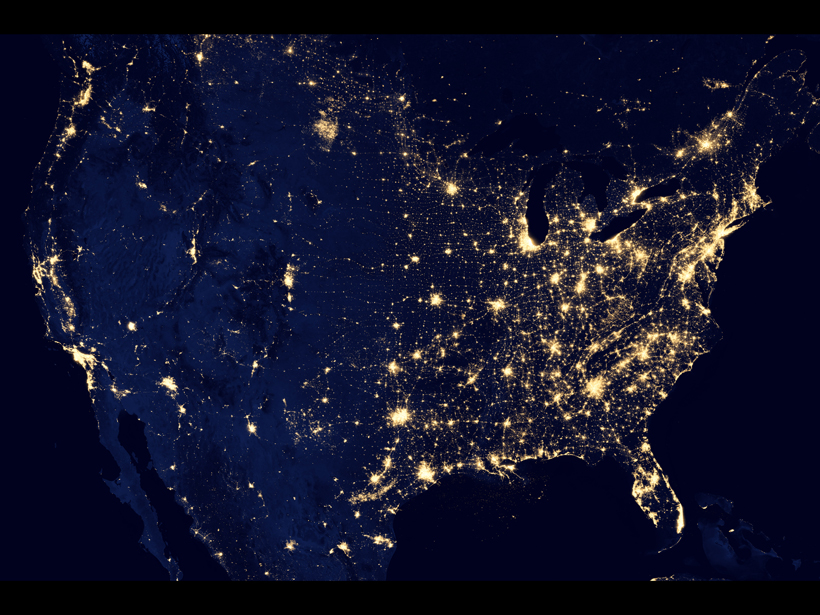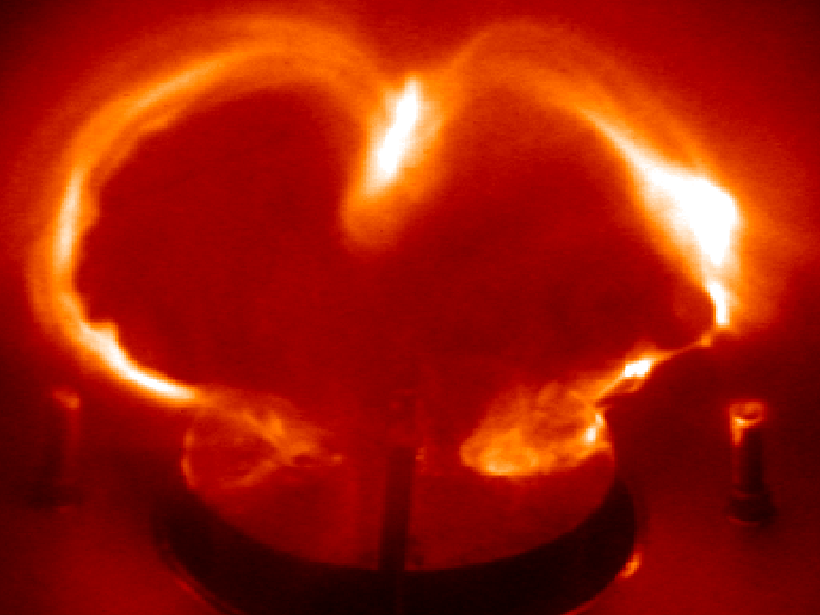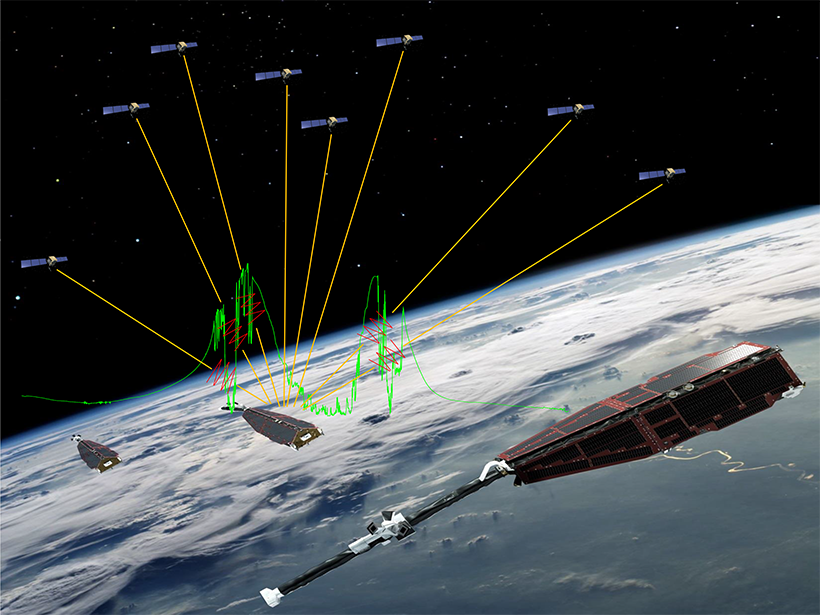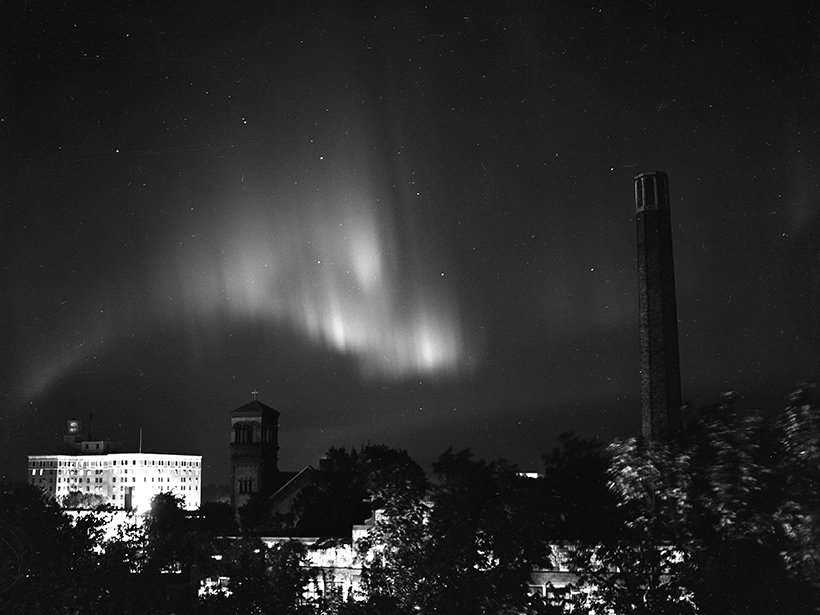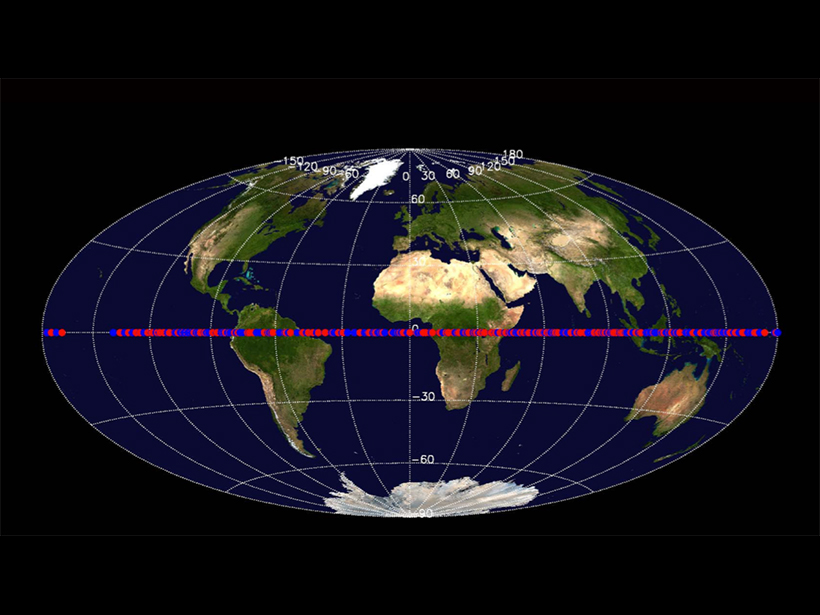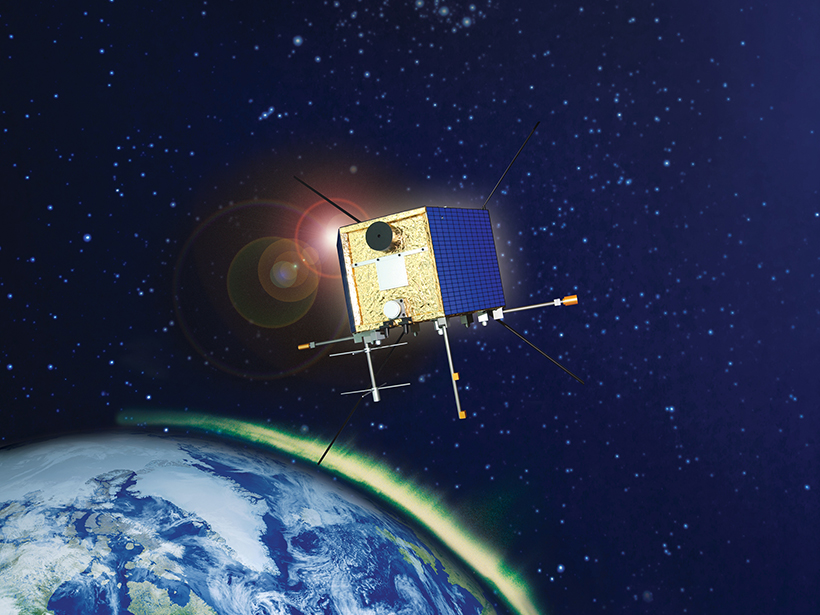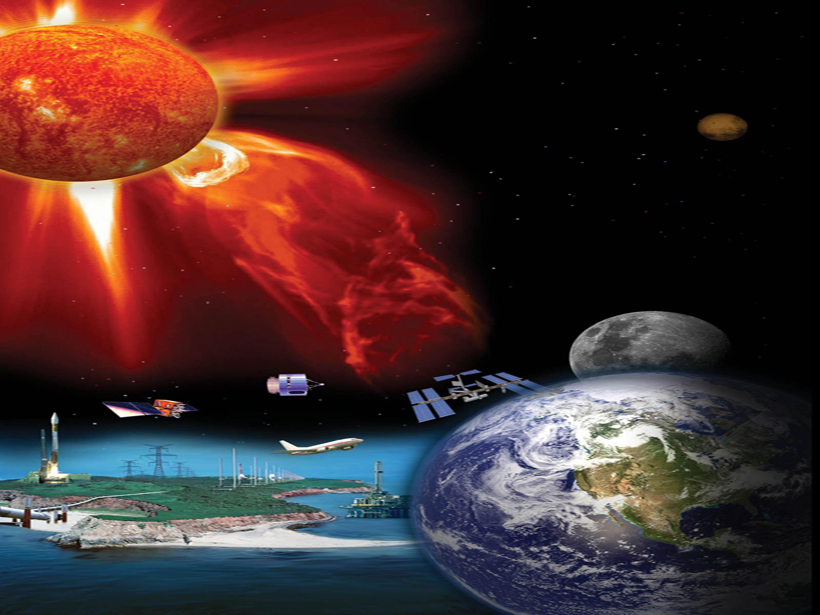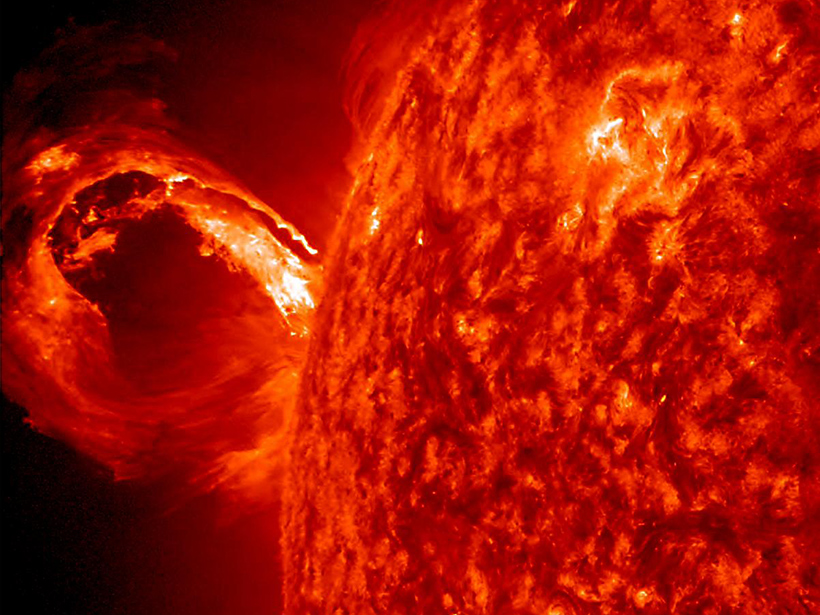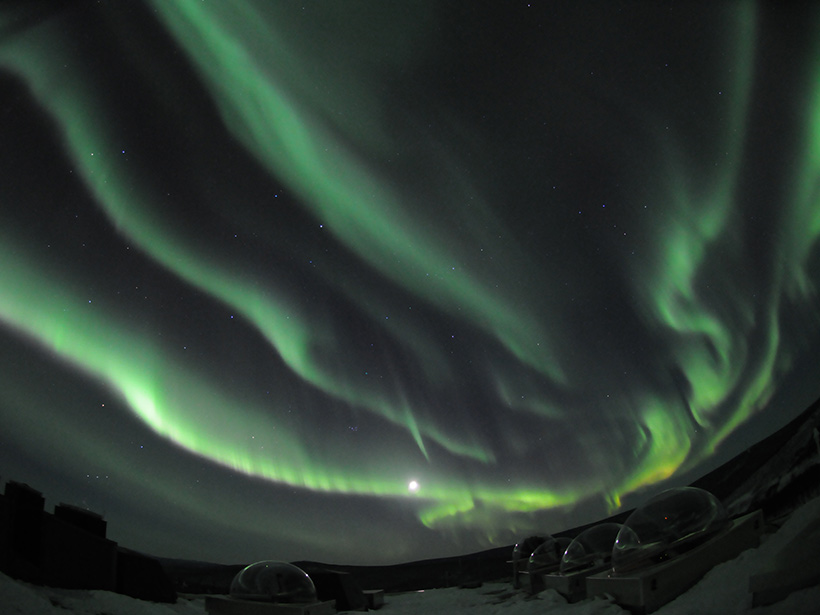Variations in Earth’s magnetic field can induce electric fields in the ground, driving damaging currents through our power grids.
space weather (hazard)
Lab Experiment Tests What Triggers Massive Solar Eruptions
In a first-of-its-kind demonstration, scientists provide experimental support for a possible mechanism behind the formation of coronal mass ejections.
What Causes GPS Signal Loss on Satellites like Swarm?
Using data from the European Space Agency's Swarm mission, scientists find that abrupt drops in the ionosphere's electron density may cause low-orbiting satellites to lose contact with GPS satellites
The Geomagnetic Blitz of September 1941
Seventy-five years ago next week, a massive geomagnetic storm disrupted electrical power, interrupted radio broadcasts, and illuminated the night sky in a World War II battle theater.
Predicting Space Weather, Protecting Satellites
A new model predicts electron and ion fluxes at geosynchronous orbit an hour ahead of time, allowing satellite operators to protect their instruments.
Tracking Ions at the Edge of the Atmosphere
The first results from a recently launched satellite hold promise for studying solar storms, the very top of Earth's ionosphere, and how the atmosphere is evolving.
How Accurate Are Ionospheric Models?
A new study puts the latest version of a venerable model of Earth's ionosphere to the test, with some unexpected results.
Space Weather Research and Forecasting Act Introduced to Senate
This bill is a welcome and proactive effort to align all federal agencies to act in the nation's best interest when it comes to forecasting and responding to extreme space weather events.
Did Solar Flares Cook Up Life on Earth?
Scientists have found that "super" solar flares could have warmed the ancient planet and jump-started life.
Aurorasaurus Puts Thousands More Eyes on the Sky
Citizen scientists share real-time auroral sightings to advance research.

